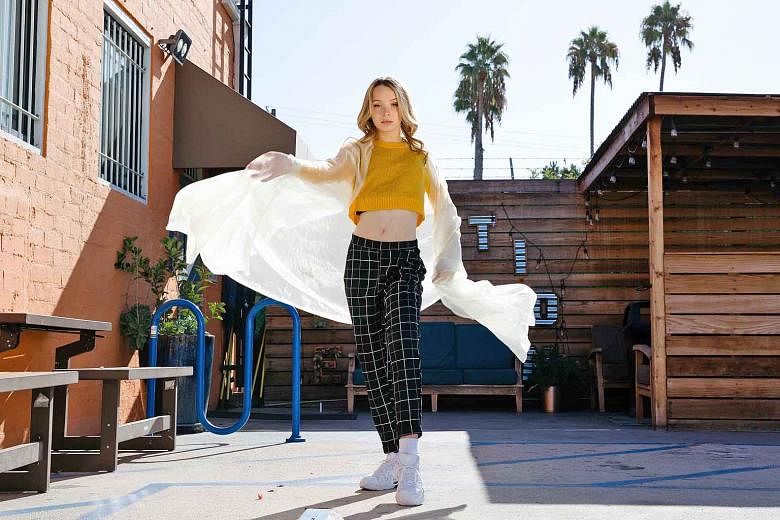LOS ANGELES • At age 12, dancer Taylor Hatala was touring with American singer Janet Jackson. At 16, she has reached an even higher perch.
With 1.2 million Instagram followers, Hatala is one of the top dance influencers. She is part of a new generation of performers who are redefining how the world sees dance.
And it is no longer in the background.
Touring as a back-up dancer for an artist such as Jackson or Justin Bieber used to be a commercial dancer's dream. Now, that kind of work is a stepping stone to an even bigger prize: a robust social media account.
Dancers who break through on Instagram, YouTube and TikTok, the relatively new app for short videos, can reap personal, artistic and financial rewards far beyond the pay cheques for executing someone else's moves and pounding the stage behind a pop star.
Internet popularity can be a dancer's entree to choreographing and starring in her own viral videos, travelling the world as a guest artist and teacher, and inking lucrative brand deals and endorsements.
"It used to be that your resume was a sheet of paper you would hand in at auditions," says Hatala, who specialises in hip-hop and is known as @tayd-dance on Instagram. "Now it's our social media. My Instagram is my resume and my Twitter is my resume... People say, 'We saw your Instagram and this is why we wanted you.'"
Tall and willowy, Hatala is a powerful dancer with a refined quality, every move beautifully clear, whether it is a sharp pop or the flutter of an arm like a breath of wind.
When she speaks, she is disarmingly open. There is not much about her world that she has not analysed.
Her life is "chaotic", she says, and she loves it. But like most dancers, Hatala is a perfectionist. This puts her in a bind with the ethos of her era.
"Sometimes I stress out about it because, in our generation, if something doesn't interest you in the first two seconds, you scroll past it," she says. "I have a constant battle with it because everything I put out, I want to be perfect. I want to be proud of it. But at the same time, personally, I appreciate dancers who are raw over their social media. And it's important to me to still show my fans that I am human."
There, you have the key issues for these young performers to juggle: How to hook their fans. How to keep luring new ones. How to post top-notch, original work five or more days a week. How to balance awesomeness and relatability, the chief currency to a digital audience.
That is especially true at the younger end of the millennial spectrum, those 18-to 25-year-olds - so coveted by marketeers, so difficult to reach - who want to see themselves in their heroes.
"Everyone in this industry is trying to figure out what goes viral," Hatala says.
"Most of the time, the videos I put the hardest work into only get so many views. And a lot of the videos that have gone viral have just been, literally, me dancing and having so much fun in the studio, not expecting anything out of it. Or just with my dad and his phone."
"You have to stay on top of it," she adds. "You have to be looking at your insights and just see what your followers like."
Staying on top in the digital landscape is more art than science, even though science can help.
Analytics show what demographic they are reaching, where their fans are and what posts keep their attention.
"They're the first generation of dancers that combine the pixie dust and the data," says Mr Larry Shapiro, chief executive of Ensemble Digital Studios, an artist management company.
Among his clients is Kaycee Rice, a 17-year-old hip-hop dancer with fierce energy and extraordinary flexibility. She has more than two million Instagram followers and two YouTube channels, where, she says, she gains 200 to 500 subscribers a day.
"The difference between Paula Abdul at her start and Kaycee Rice is that Kaycee analyses the data behind her videos, like engagement and retention rate," Mr Shapiro says.
This means that Rice can get the brands that sponsor her before more eyeballs.
"You have an entire generation around the world who identifies with her," Mr Shapiro says.
"Kaycee is reaching 13-to 18-year-old kids and shaping what kind of entertainment they like. So when she grows up and produces bigger projects, she'll have fans whose values she's shaped."
WASHINGTON POST

